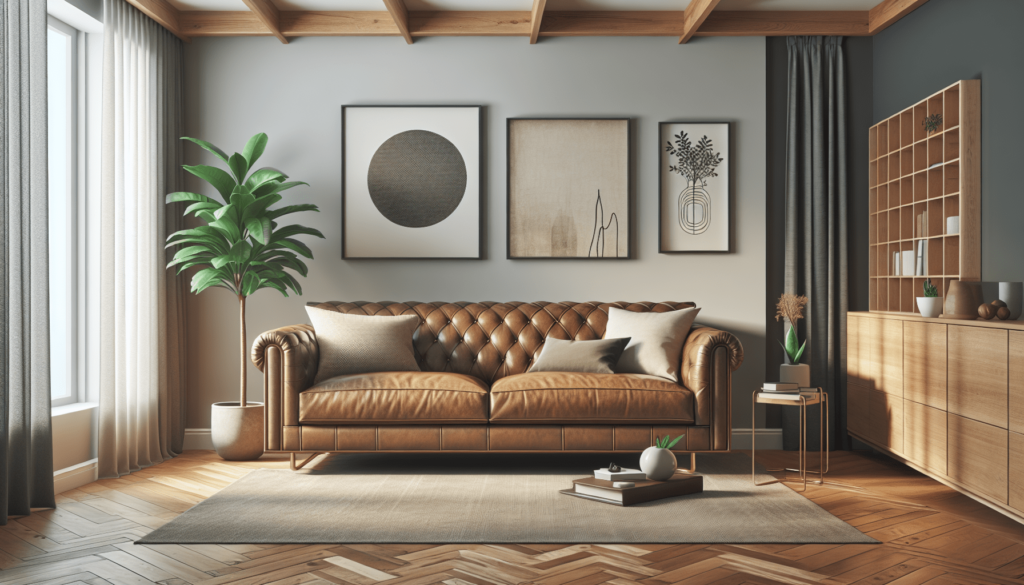Selecting the right furniture for your home can be a fun and exciting endeavor, but it becomes even more important when you need to consider allergens. In “Tips for Selecting Allergen-Resistant Furniture,” you’ll discover practical advice and insightful tips on how to choose pieces that not only fit your style but also help maintain a healthier living environment. From the type of materials to the specific designs to look for, this guide will walk you through everything you need to know to keep your home inviting and allergy-friendly. Have you ever walked into your living room and started sneezing uncontrollably? Or perhaps you’ve noticed that your allergies get worse when you spend time on your sofa or in your bedroom? These are common signs that your furniture may be harboring allergens. If you’re looking to create a more comfortable and healthy living space, selecting allergen-resistant furniture is a great place to start.
Why Allergen-Resistant Furniture Matters
Allergens such as dust mites, pet dander, pollen, and mold can settle into your furniture, contributing to an unhealthy living environment. Traditional furniture can act as a breeding ground for these irritants, exacerbating symptoms for those with asthma, eczema, and other allergy-related conditions.
By opting for allergen-resistant furniture, you’re not just making a purchase; you’re investing in a healthier home. Allergen-resistant furniture can help in reducing irritants and making your space more breathable and comfortable.
Understanding Common Allergens
Before diving into tips, it’s essential to understand the most common allergens found in homes and how they interact with furniture.
Dust Mites
Dust mites thrive in warm, humid environments and feed on our dead skin cells. They are often found in upholstered furniture, mattresses, and pillows.
Pet Dander
Pet dander consists of tiny, even microscopic, flecks of skin shed by cats, dogs, rodents, birds and other animals with fur or feathers. These bits of skin can cause reactions in people who are specifically allergic to these triggers.
Mold
Mold spores can be found in any damp environment and can settle into various types of furniture. This can lead to respiratory issues and other health conditions.
Pollen
Pollen from trees, grasses, and weeds can enter your home through open windows and doors, settling into furniture fabrics and cushions.

Tips for Selecting Allergen-Resistant Furniture
1. Choose Non-Upholstered Furniture
One of the easiest ways to avoid allergens is by choosing furniture that isn’t upholstered. Materials like leather, vinyl, metal, and wood don’t provide a place for dust mites and other allergens to settle.
Benefits of Non-Upholstered Furniture:
| Benefit | Description |
|---|---|
| Easy to Clean | Hard surfaces can be wiped down regularly to remove dust and other allergens. |
| Less Likely to Harbor Allergens | Non-porous surfaces don’t provide a breeding ground for dust mites, pet dander, and mold. |
| Modern Aesthetic | Many non-upholstered options offer a sleek, modern look that can serve as a stylish addition to your home. |
2. Opt for Allergen-Resistant Fabrics
If you prefer upholstered furniture, look for pieces made from allergen-resistant materials. Microfiber and tightly woven fabrics can be less hospitable to allergens.
Allergen-Resistant Fabric Types:
| Fabric Type | Description |
|---|---|
| Microfiber | Tightly woven fibers prevent dust mites and allergens from embedding themselves into the fabric. Offers a soft, comfortable feel. |
| Leather and Faux Leather | Both types are non-porous, meaning they don’t hold onto dust mites, pet dander, or pollen. They can be wiped down and cleaned easily. |
| Crypton Fabric | Engineered fabric designed to resist stains, odors, and bacteria. Ideal for families with children or pets. |
3. Look for Hypoallergenic Filling
The filling inside your furniture can also contribute to allergens. Materials like synthetic down (often made from polyester) can be a better option than natural down or feather filling, which can harbor dust mites.
4. Prioritize Easily Removable Covers
Opt for furniture with removable and washable covers. This makes it easy to regularly clean your furniture and lessen the allergens.
Tips for Removable Covers:
| Tip | Description |
|---|---|
| Wash Frequently | Aim to wash removable covers every one to two weeks to keep allergen levels low. |
| High-Temperature Wash Cycle | Washing in hot water can kill dust mites and remove allergens more effectively than cold water. |
| Use Allergen-Reductant Detergent | Some detergents are formulated to reduce allergens, making them effective partners in fighting allergens in your home. |
5. Consider Anti-Allergen Treatments
Some furniture brands offer pieces treated with anti-allergen solutions. These treatments can help repel allergens such as dust mites, mold, and pet dander.
6. Regular Cleaning and Maintenance
Owning allergen-resistant furniture is just one part of the equation. Maintaining cleanliness through regular cleaning routines can further help in reducing allergens.
Cleaning Tips for Different Furniture Types:
| Furniture Type | Cleaning Tip |
|---|---|
| Leather & Faux Leather | Wipe down with a damp cloth regularly. Use a leather cleaner for deeper cleaning. |
| Wood | Dust with a microfiber cloth to capture dust particles. Regularly polish with an appropriate wood cleaner. |
| Upholstered | Vacuum regularly with a HEPA filter vacuum. Spot clean with allergens-reducing cleaning solutions. Consider professional deep-cleaning once a year for thorough sanitation. |
7. Invest in HEPA Filters
High-Efficiency Particulate Air (HEPA) filters can significantly reduce airborne allergens. Place HEPA air purifiers in rooms with allergen-resistant furniture to capture dust, pollen, and pet dander.
8. Utilize Allergen-Proof Encasements
For items like sofas and mattresses, consider allergen-proof encasements. These encasements create an additional barrier, making it more difficult for allergens to penetrate your furniture.
9. Opt for Solid Wood Furniture
Solid wood is less likely to harbor allergens compared to materials like particleboard or MDF, which can release formaldehyde and other chemicals into the air.
Benefits of Solid Wood:
| Benefit | Description |
|---|---|
| Durability and Longevity | Solid wood furniture is sturdy and can last for many years, making it a worthwhile investment. |
| Low Allergen Potential | Solid wood surfaces don’t trap allergens, and regular cleaning can keep them dust-free. |
10. Evaluate Your Home Environment
Picking the right furniture is crucial, but also consider other factors such as humidity levels, air circulation, and the presence of pets, which can contribute to allergen buildup.
Room-Specific Considerations
Living Room
- Sofas and Couches: Opt for leather or faux leather, or select tightly woven microfiber.
- Rugs and Carpets: Consider replacing large carpets with smaller, washable rugs. Hardwood floors are a better option to minimize allergens.
- Curtains: Use blinds or shades instead of fabric curtains, or choose washable, allergen-resistant curtains.
Bedroom
- Mattresses: Invest in hypoallergenic mattresses and mattress encasements.
- Bedding: Choose allergen-resistant bedding like microfiber, silk, or high-thread-count cotton. Avoid down pillows and comforters.
- Furniture: Select solid wood or metal furniture for bed frames and dressers.
Kitchen
- Cabinetry: Solid wood or metal cabinets are your best bet for preventing mold and dust buildup.
- Seating: Metal or wooden chairs are easier to wipe down and keep allergen-free.

Final Thoughts
Creating an allergen-resistant environment doesn’t require a complete overhaul of your existing furniture. By integrating these tips into your buying decisions and maintenance routines, you can significantly reduce the allergens in your home. From choosing the right materials and fabrics to implementing regular cleaning practices, there are plenty of strategies to help you breathe easier and live more comfortably.
Your journey to a healthier home doesn’t end here. Consider consulting with specialists in home health or indoor air quality for additional personalized advice. Every step you take now is a step towards a more allergen-free and serene living space. Happy furnishing!
